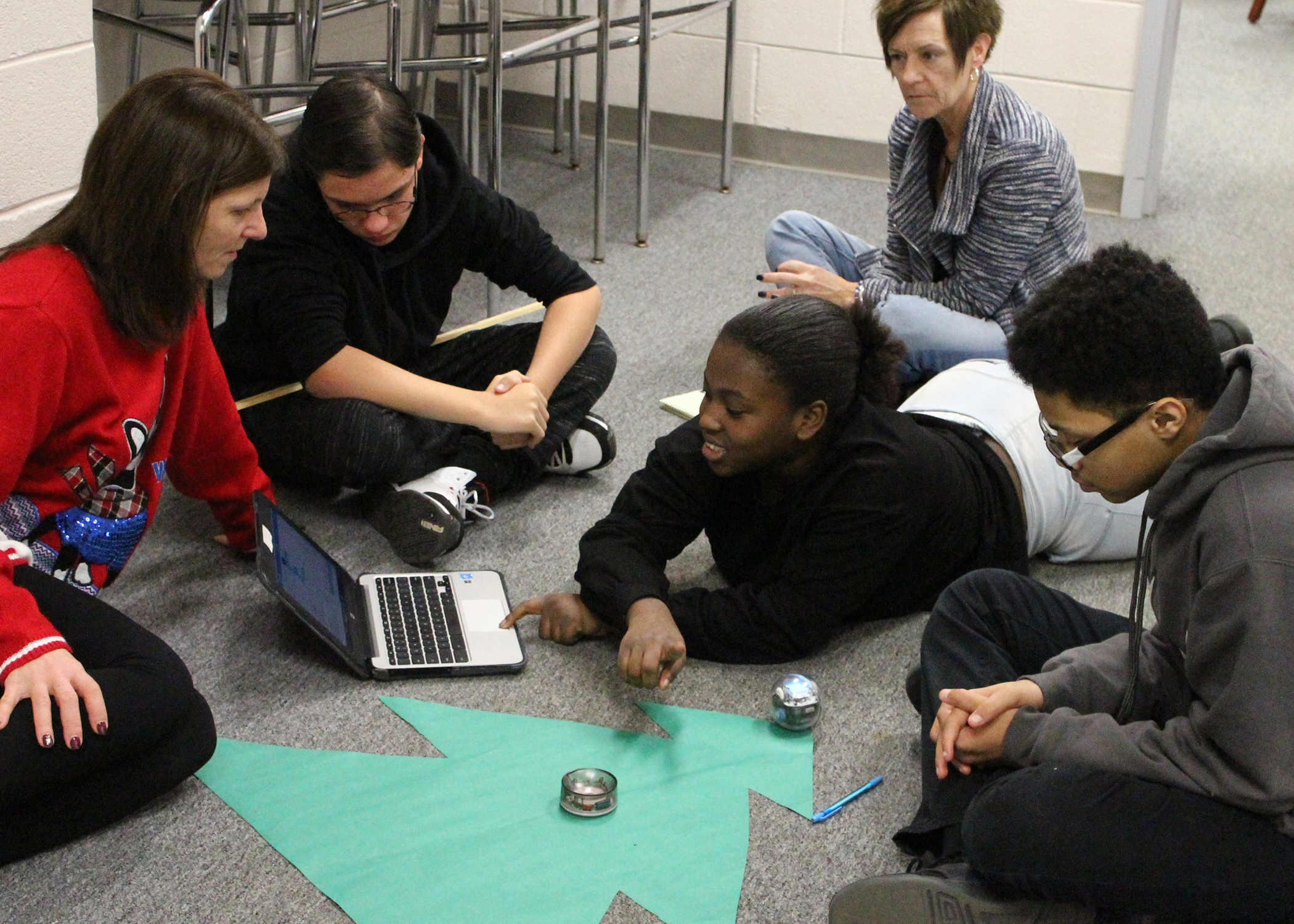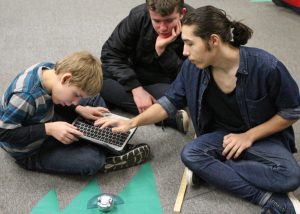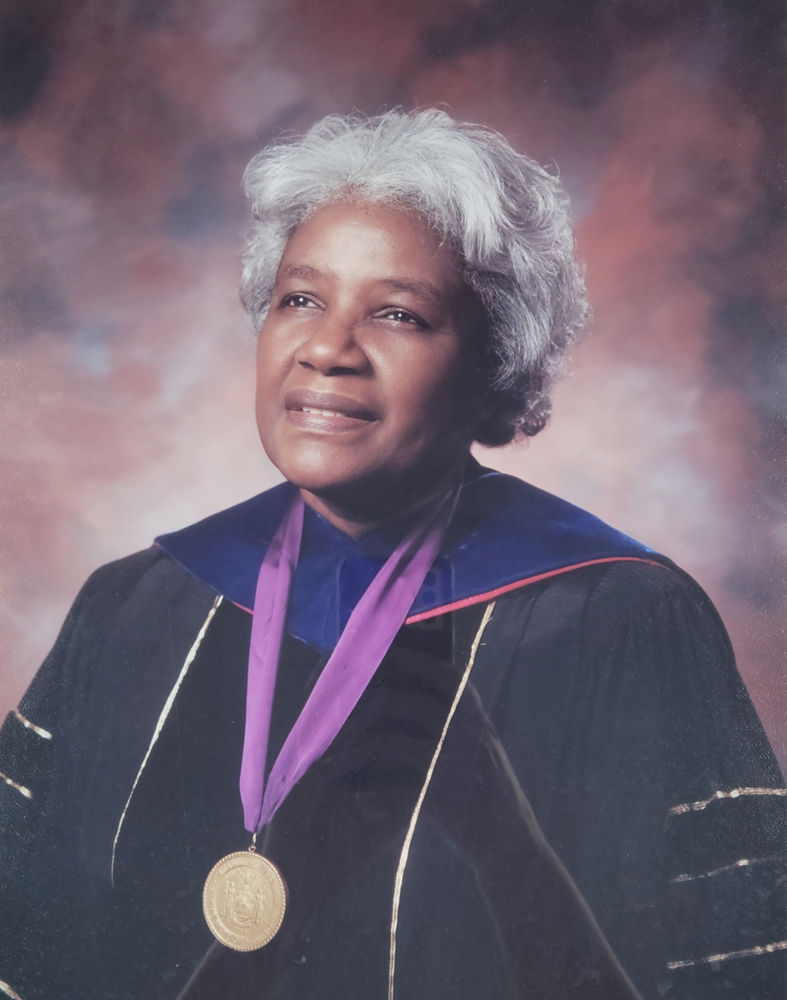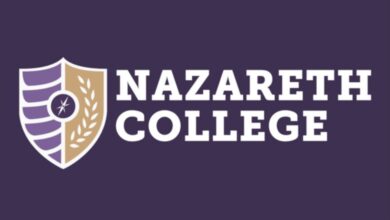Putting a new spin on algebra and logic skills at C-C’s Ninth Grade Academy

The challenge for students in Churchville-Chili Ninth Grade Academy (NGA) teacher Nancy McMahon’s algebra class was to program the little robot spheres to roll around the perimeter of the large green paper trees, navigating multiple stops and turns, each with different angles and distances. The group of ninth-graders broke into teams and set to work with their protractors, rulers and critical thinking skills, to determine a set of coded directions for the robots to follow.

Churchville-Chili schools have been incorporating versatile new tools, like the Sphero Bolt robots, at all grade levels to make learning more accessible and creative. One goal is to encourage students to explore STEM (science, technology, engineering and math) fields in preparation for 21st century jobs. The approach also helps students develop lifelong learning skills like teamwork, creativity, logic and problem solving that will serve them throughout life and career.
Teachers, too, are getting more collaborative and expanding their teaching mindsets. In this case, McMahon joined forces with Library Media Specialist Becky Leathersich and Instructional Technology Specialist Megan Hugg to design this engaging introduction to computer coding within the required standards of the math curriculum.
“It’s a unique, hands-on way for students to understand the math equation Rate x Time = Distance,” explained McMahon. “They can program the robots with a number of variables, including speed, to actually see how each change effects the result. The best thing is that students have a greater willingness to work together, to think creatively and to experiment – all skills that are vital to their future success.”
Provided information and photos




